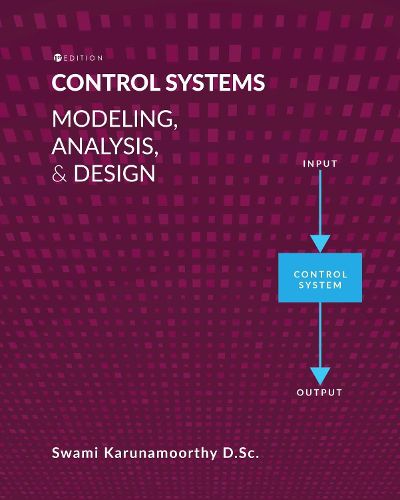Readings Newsletter
Become a Readings Member to make your shopping experience even easier.
Sign in or sign up for free!
You’re not far away from qualifying for FREE standard shipping within Australia
You’ve qualified for FREE standard shipping within Australia
The cart is loading…






Control Systems: Modeling, Analysis, and Design introduces students to the modeling of dynamic and control systems and the study of the characteristics, performance, stability, response, and design of several control systems.
The organization of the book's chapters mirrors that of a typical control system diagram. Each chapter begins with an introduction, followed by learning objectives that serve to display the desired knowledge used as input to the learning system. Topic discussion within the chapters serves as pedagogical education to attain the desired knowledge. At the end of each chapter, a summary is provided to describe what was taught within and the knowledge gained as expected outcome from the learning system. Multiple-choice questions and practice problems are included to help students assess their knowledge as feedback to improve learning of the material.
Dedicated chapters address the constituents of control systems, modeling of dynamic systems and control systems, the characteristics and performance of control systems, and control system stability. Students learn about the root locus method, bode and Nyquist plots, control system design, and state variable models and design.
Control Systems is an ideal resource for undergraduate students in engineering and technology in the areas of mechanical, aerospace, biomedical, mechatronics, and electrical. Students are assumed to have previous experience with dynamics, differential equations, Laplace transform, and matrices.
$9.00 standard shipping within Australia
FREE standard shipping within Australia for orders over $100.00
Express & International shipping calculated at checkout
Control Systems: Modeling, Analysis, and Design introduces students to the modeling of dynamic and control systems and the study of the characteristics, performance, stability, response, and design of several control systems.
The organization of the book's chapters mirrors that of a typical control system diagram. Each chapter begins with an introduction, followed by learning objectives that serve to display the desired knowledge used as input to the learning system. Topic discussion within the chapters serves as pedagogical education to attain the desired knowledge. At the end of each chapter, a summary is provided to describe what was taught within and the knowledge gained as expected outcome from the learning system. Multiple-choice questions and practice problems are included to help students assess their knowledge as feedback to improve learning of the material.
Dedicated chapters address the constituents of control systems, modeling of dynamic systems and control systems, the characteristics and performance of control systems, and control system stability. Students learn about the root locus method, bode and Nyquist plots, control system design, and state variable models and design.
Control Systems is an ideal resource for undergraduate students in engineering and technology in the areas of mechanical, aerospace, biomedical, mechatronics, and electrical. Students are assumed to have previous experience with dynamics, differential equations, Laplace transform, and matrices.